Most Korean schoolchildren have a summer vacation for the month of August. Well, they have a vacation from their traditional schools -- that doesn't mean they're off the hook by any means. For many students, summer "break" means additional hours at hagwon (enrichment academies usually attended after school and on weekends) or, for the lucky few, extra time at CEV. We had a summer intensive class that ran Monday-Friday for three weeks. However, Rachel and I were on cyber school duty during this period, so our contact with students was mostly limited to a computer screen.
We did receive a special, three day vacation at the beginning of August, though, and we used this to return to Japan, this time to Osaka, Japan's second largest city and a great outpost for exploring the many culturally important places in the region. Notably, the ancient capital city of Kyoto is a scant 30 minute train ride north; this was our primary sightseeing destination.
Never one to waste time, Rachel dove right into a bowl of noodles the night we arrived.
Then, at a different establishment, we drank sake (traditional Japanese rice wine) and ate yakitori, grilled meat on skewers. This food and drink commonly accompany one another. In Japan, as in Korea, the practice of drinking alcohol is almost always joined by eating something; one doesn't simply "go out drinking" without eating as well, and there are often specific dishes that go with particular drinks (in Korea, for instance, beer and fried chicken are constant companions).
We responsibly limited our intake, however, because we wanted to get an early start the next morning on our first visit to Kyoto. Our first stop was the Fushimi Inari Shrine, an ancient Shinto shrine famous for its hundreds of orange gates leading up a mountainside. To get the full affect of our experience in Kyoto, take a space heater, turn it up full blast, and set it on the table in front of you. Then cram about ten thousand other tourists into the room with you. It was hot. And crowded. But still lovely.
Part of the ritual at such shrines, which we observed, is to make a wish while throwing a small coin into the shrine. Then, you bow, clap twice, and ring the bell (pictured below at the top of the long orange, white, and blue cords).
Orange was far and away the dominant color at this place, so naturally we felt at home (Go Vols!).
This is the entrance to the series of gates. The gates start off fairly short...
...then get taller...
...and taller as you ascend the mountain.
The fox is a common character at this and other such shrines. They are seen as messengers and are often holding a key in their mouths.
But I've skipped over the most important detail regarding our day in Kyoto. Back in February, over the Lunar New Year holiday, we took a ski trip from Seoul where we met Shin, a Japanese-American man currently living in Shanghai. I remembered that he had lived his early years in Osaka before moving to the States, so I messaged him a few days before our trip for some recommendations on how we should consider spending our time there. He replied immediately, stating that he was currently in Osaka visiting his parents and asking if we'd like to take a day-trip to Kyoto. We couldn't say "yes" fast enough. Here the two of us are at the shrine; you'll notice that I'm already making good use of a sweat towel by about 10:30am.
Rachel, of course, remained elegant despite the heat.
The best part about having Shin for a tour guide, aside from the fact that he's just a great all-around guy, was that he led us everywhere and we essentially had to do zero thinking. Unlike most of our traveling where we constantly have to pay attention to where we are and where we're going, we let him do all of the planning and navigating for us. After the steamy chaos of the shrine, he took us to see this peaceful Zen garden called Reiun-in.
As this page notes, Kyoto is the spiritual center of Zen Buddhism in Japan and contains many lovely gardens such as this.
Rachel's position on the shade: pro.
Back onto a commuter train, where these boys wanted a photo with us. They were in good spirits because they'd just won their soccer game. The second boy from the left is the best player (I asked).
Then, more food! We had sushi for lunch.
Kyoto Tower, built in the early 1960's, is hardly noteworthy in a city of so many cultural treasures. But I think it maintains a certain kitschy charm, not unlike that of the Knoxville Sunsphere (Go Vols).
Then we headed back into the heat and crowds. There were many European tourists there. We don't hear languages like French, German, and (Peninsular) Spanish in Korea, which is not quite such a tourist hub.
Kiyomizu-dera was our next stop. Surprise! It's another Buddhist Temple.
Rachel paid a small amount of money to get to shake this box until a stick came out a small hole in the bottom. The stick was engraved with Japanese writing, which was then decoded by the workers and she was given a corresponding piece of paper with some sort of fortune on it. I think it said that she would be very lucky in love.
That next pagoda is about 300m away, which doesn't sound like much until it's 102 degrees F with nearly equal humidity.
Shrine, shrine, everywhere's a shrine.
A popular option for many tourists (mostly, but not all, female) was to rent traditional Japanese kimonos and the accompanying wooden shoes for trekking around Kyoto. While we appreciated their dedication, it looked terrifically unpleasant given the heat. Though I suppose at a certain point, it's hard to get much hotter.
Anywhere shaded might as well have had a huge "Welcome" sign on it.
The handwashing stations, intended for purification rituals, were also a happy relief -- although for more corporeal reasons than originally intended, I'm afraid.
The original part of the temple, to the right, is currently receiving some tender loving care and is off-limits to tourists. You can see Kyoto Tower in the middle left of the picture.
We made it to the next pagoda! Sadly, this is the only photo of the three of us together that we have. But I think it's indicative of the sweaty fun that we had.
We decided to pass on waiting in line for a drink of water from these downspouts. But it did look refreshing.
Back down the mountain a bit, we stopped at a traditional Japanese tea room for a cool down and snack. Matcha, the thick green tea is rather bitter, which is complemented by the sweetness of the mochi, a rice cake wrapped in a leaf.
We arrived at the Imperial Palace too late for a tour, but it was still a pretty place to walk around.
Finally, and as I'm writing this I can hardly believe that we still did more, Shin took us to a more urban area of Kyoto to find dinner. We happened along this outdoor fair along the river.
More traditional clothing, now with some dancing!
People really do tend to like the same sorts of things all over the world. Especially when the thing is eating and drinking with friends.
Shin, once again, chose a great place for us to eat dinner. Rachel commented that she felt like Anthony Bourdain all day, having a local guide show us where to go and what to eat. He should absolutely book Shin for his next trip to Osaka.
Here we ate okonomiyaki, a traditional Japanese food that is particularly associated with the Osaka are. The ingredients include a lot of cabbage, flour, eggs, and various other vegetables and proteins. First, you mix the ingredients.
Then you pour them on the grill, flatten into a pancake shape, and grill on both sides.
Finally, you top it with a sweet okonomiyaki sauce, then a mayonnaise-based sauce, and finally with katsuoboshi. These are flakes of dried, smoked fish that have a tendency to "dance" when they are added on top of something hot, which is fun.
Full and tired, we headed back downtown to catch a train back to Osaka. Maybe it was the heat, but I think the tower kind of grew on me.
We began the next day as we had finished the last: back at Osaka Station with thousands of other commuters. The size and scope of this station is difficult to capture, as it includes numerous rail lines from different companies. Japan's rail system is by far the most advanced that I have ever experienced. It feels like almost any place in the country is reachable by rail.
Back in Kyoto, we reached a few more places we hadn't had time for the previous day (much more slowly). We started at Kinkakuji, better known in English as "The Golden Temple" for reasons that I think are obvious.
The adorable proprietor of this restaurant was kind enough to grant us a photo.
Then, we checked off one of Rachel's priority items, the Arashiyama Bamboo Forest. This was a terrific break from heat.
And we made a new friend, Stef from Switzerland! One of the best parts of traveling is the serendipitous meeting of like-minded folks.
We made it back to Osaka during the afternoon rush hour.
Oh, this was the view from the balcony of the Airbnb apartment where we stayed: a Buddhist temple and graveyard.
Then we headed to the Dotonbori area for our last evening in Osaka. Here we drank sake again.
And ate more food on skewers.
I don't know why I've never thought to wrap bacon around hard-boiled quail eggs before, but I'm glad somebody did.
Dotonbori is famous for its nightlife and riverwalk.
And perhaps even more famous for this running guy.
Who posed better?
She did. (Always.)
We managed to squeeze in (-to our stomachs) one last okonmiyaki, this time of the quick, street food variety.
We had one last item on our Osaka to-do list, which we managed to check off on our way to the airport.
Osaka Castle.
The views from the top of the castle were great, and helped give a sense of just how big Osaka really is.
I was (happily?) surprised to see a sign in Japan owning up to some of its poor historical treatment of those on the Korean peninsula. In Korea it often feels as if we're continually bombarded by messages of past Japanese atrocities. A lot of that resentment seems to stem from the belief that Japan has been insufficiently apologetic for those actions. Here, at least, was some evidence to the contrary.
For scale.
We scraped together our few remaining yen to each get one last bowl of noodles at the airport.
Then it was back through the hazy East Asian sky to our Korean home.
As you can likely gather if you made it this far -- and thank you if you did! -- we think Japan is a pretty fascinating place to visit. The differences between the two countries have been interesting to witness. Of course there are a lot of similarities between the two, but in some ways, Japan feels a bit more mature than Korea. The anxiety level seems to be a little lower, and the Japanese people evince a sort of cool, collection that we don't often feel here. Korea, on the other hand, maintains a feisty, youthful energy that is mostly endearing, even if occasionally frustrating.
For those wishing to visit Asia for the first time, I think Japan would be a terrific place to start. It is so replete with cultural treasures, but the modern conveniences make life and travel there very comfortable. English is widely spoken, and tourists are prevalent enough that people won't look at you funny. Well, except for the occasional soccer team.
Speaking of traveling in Asia, in two hours we head to the airport to fly to Kunming, China to begin two weeks of travel in Yunnan Province. Best of all, we are meeting up with my sister there! Thank you, as always, for following our journey. We continue to feel very blessed to have these chances, our health, and each other.








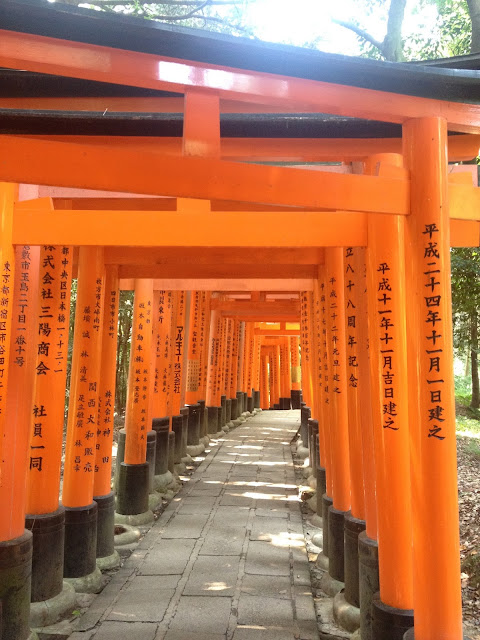
























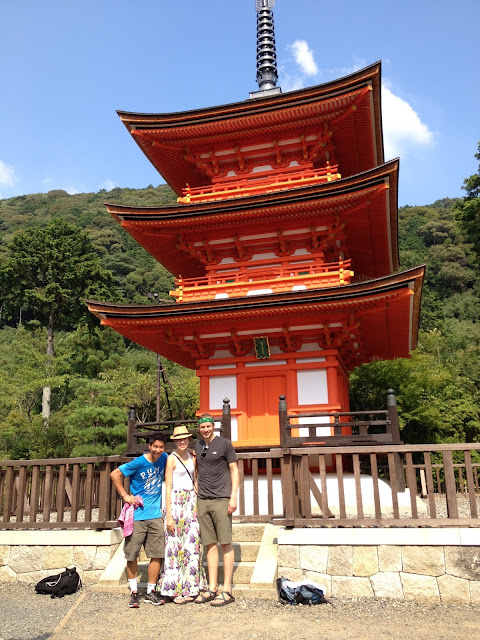




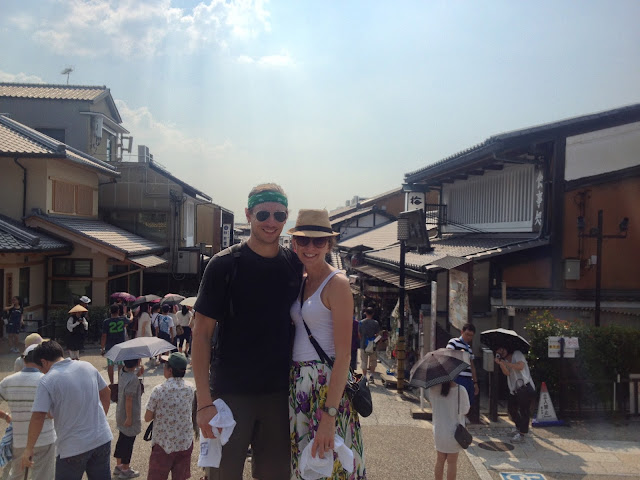

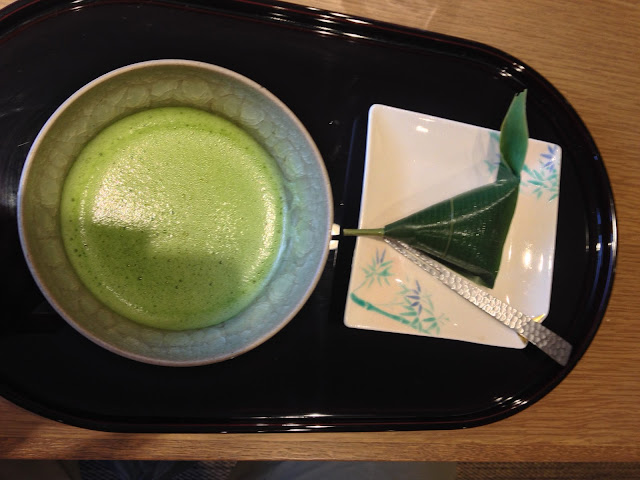







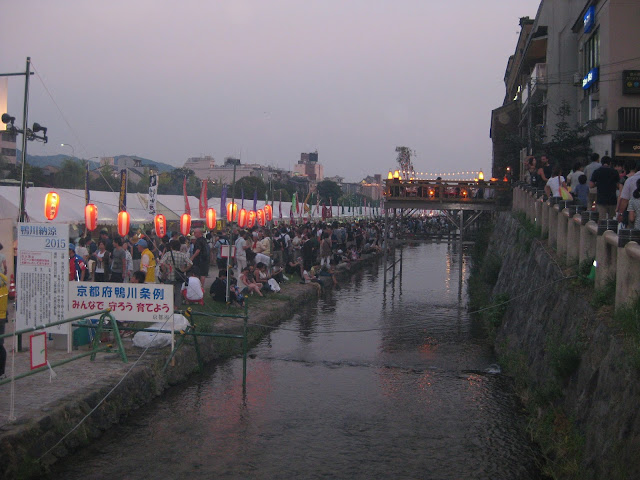













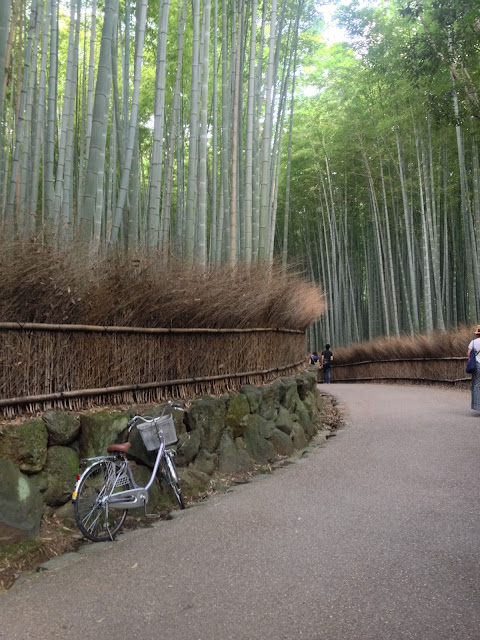





























No comments:
Post a Comment